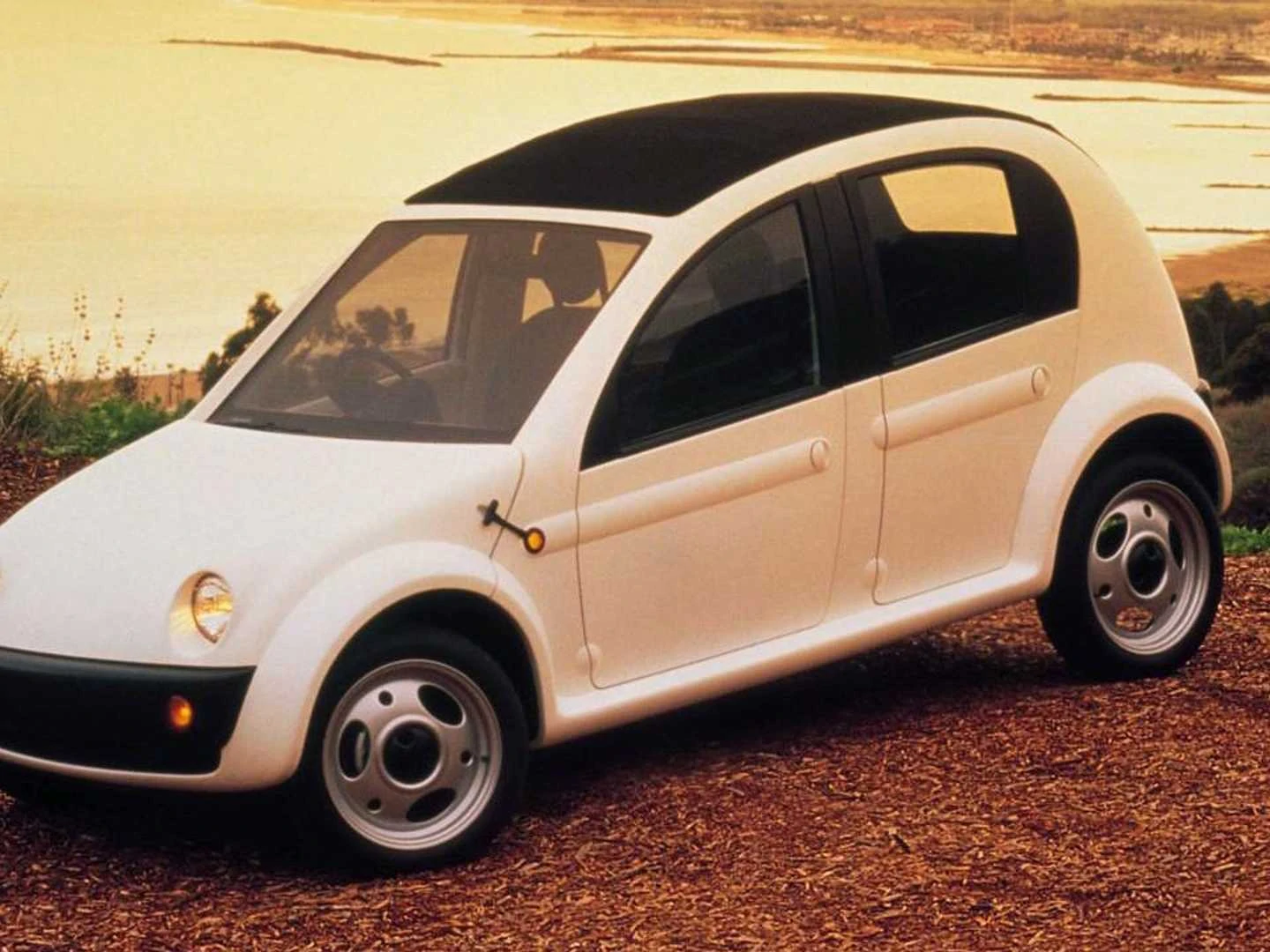America’s original Citroen 2CV design had a plastic body, and a two-cylinder air-cooled engine.
Chrysler had an idea for a small, affordable car that was easy to maintain and purchase long before the Tata Nano swept the Indian market. The CCV is a car that was inspired by Europe’s famous Citroen 2CV. It has a generous ground clearance of 200m (7.87 inches).

The main feature of the concept was its ultra-lightweight body made from polyethylene terephthalate. This is the same material used in making soda bottles. It took just six and a quarter hours to construct the vehicle. This was three times faster than a conventional compact car of the era. The recyclable body was designed by Brian Nesbitt, the same man who created the oddly similar PT Cruiser.
For its 95kg (209 lb) body, the Chrysler CCV used approximately 2,000 PET bottles. The bodywork was made up of four large panels that were bolted together and glued together. There were also metal subframes for the engine and suspension. The engine was an air-cooled, two-cylinder unit similar to the 2CV. It was sourced from Briggs & Stratton. Although the tiny engine of 0.8-liters produced only 25 horsepower, it was able to move just 1199 lbs (544 kilogram)

The concept was designed for left- or right-hand drive markets. It featured a large rollback roof made of fabric similar to the 2CV, which inspired it. It could be converted to a convertible using zips. The interior was washable, and each card included a handy slider that can replace traditional window winders. Francois Castaing (HTM0_ Chrysler’s former executive vice president) said that the CCV was easy to assemble and was safe in crashes. Chrysler CCV was never produced because of the 1998 DaimlerChrysler “merger between equals” condition that the project be canceled.